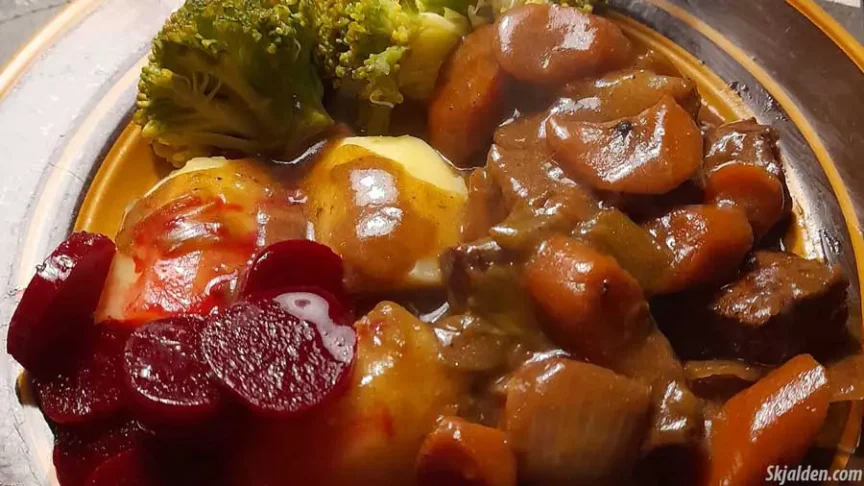Kalops is a traditional Swedish beef stew that holds a special place in both Swedish and Finnish culinary traditions. Originating from Sweden, this hearty dish is made with tender chunks of beef, onions, allspice, bay leaves, and other seasonings, creating a rich and comforting flavor profile. The stew is typically served with boiled potatoes and pickled beetroot, offering a well-rounded and satisfying meal.
The dish’s origins can be traced back to Sweden, with the first recorded recipe appearing in the 18th century in a cookbook by Cajsa Warg, a significant figure in Swedish culinary history. Her cookbook, “Hjelpreda I Hushållningen För Unga Fruentimber,” published in 1755, became a seminal work in Swedish cuisine, introducing practical and straightforward recipes like Kalops to the public. Warg’s philosophy of using readily available ingredients has made her recipes timeless and beloved in Sweden.
Beyond her contributions to Swedish cuisine, Cajsa Warg is remembered for her innovative approach to cooking and housekeeping, making culinary arts accessible and manageable for the everyday person. Her emphasis on simplicity and resourcefulness in the kitchen has left a lasting legacy, influencing not just the recipes themselves but also the approach to cooking in Swedish homes. Warg’s work continues to inspire chefs and home cooks alike, proving that good food comes from the heart and the clever use of what one has on hand.
While Kalops is Swedish, it has also found a home in Finnish kitchens. In Finland, the dish is known as “palapaisti” or “vatkuli” and may feature slight variations to suit local tastes. However, the essence of the dish remains the same, with its comforting warmth and rich flavors making it a favorite during the cold Scandinavian winters.
Kalops is more than just a meal; it represents a bridge between cultures and a connection to the past. In both Sweden and Finland, the dish is associated with home, comfort, and tradition. It is especially popular during the fall and winter months, providing warmth and nourishment. The dish’s enduring popularity in both countries highlights its cultural significance and the shared culinary heritage between Sweden and Finland.
